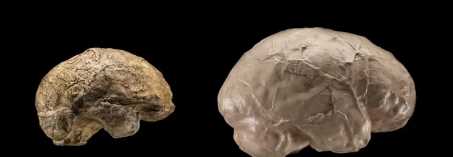People have large brains, which is a common trait. As expected for mammals with similar body sizes, primates' brains are typically approximately twice as large. The size of the human brain has quadrupled over the course of almost seven million years, with the majority of this expansion taking place in the last two million years.
It's challenging to track how the brain evolves over time. There are no prehistoric brains left for us to weigh. However, there are certain rare fossils that have maintained natural casts of the interiors of ancient skulls that can be measured. Both methods of examining ancient skulls provide information on the volumes of their brains as well as specifics about the relative sizes of their key cerebral regions.
The size of our ancestors' brains during the first two thirds of our existence was comparable to other living great apes at the time. Compared to chimpanzees, whose skulls retain about 400 ml, and gorillas, whose skulls hold between 500 and 700 ml, Australopithecus afarensis had internal capacities of between 400 and 550 milliliters. The structure and shape of Australopithecine brains began to progressively differ from those of apes at this time. For example, the neocortex had started to develop, which caused it to reassign its functions from visual processing to other parts of the brain.
Most of the changes in brain size occurred during the last third of our evolutionary history. A slight increase in brain size was observed in Homo habilis, the first member of our species Homo to appear 1.9 million years ago. This increase included an extension of the Broca's area, a frontal lobe region associated with language. A little more than 600 ml on average were found in the first fossilized Homo erectus skulls, which date back 1.8 million years.
From this point on, the species began a steady ascent, eventually reaching more than 1,000 ml by 500,000 years ago. With average brain sizes of 1,200 ml or more, early Homo sapiens were comparable to modern humans.
Our brains expanded to suit the changes as our dietary needs, technical prowess, cultural and linguistic complexity, and complexity of language all advanced significantly at this time. The alterations in form that we observe emphasize the parts of the brain that are involved in complex planning, communication, problem solving, and other higher-order cognitive processes.
With a dash of evolutionary irony, our brains have actually shrunk over the past 10,000 years of human existence. This trend may have been significantly influenced by the poor diet of agricultural communities. But in the last century, industrial cultures have seen a recovery in brain size as infant nutrition has improved and sickness rates have fallen. The human brain may be propelled into the unknown by more technological and genetic integration, even though previous evolution cannot predict the course of the future.




Leave Comment
1 Comments